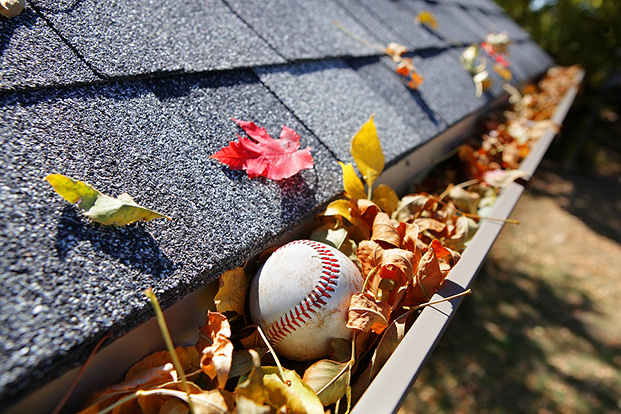Seasonal Home Maintenance Tips to Prevent Insurance Claims
March 26, 2025
Keep your home safe and avoid costly insurance claims with these seasonal maintenance tips.

Your home requires regular maintenance and upkeep. Taking care of your home can help you prevent damage that leads to insurance claims. Every home is unique in its seasonal care requirements, but this checklist can serve as a starting point for maintaining a beautiful, comfortable space house.
Spring
Repair Walkways, Driveways, and Stairs
Concrete is porous, so many homeowners seal concrete to prevent it from absorbing water. Water can seep into the concrete when the sealer wears off, causing cracks during freeze/thaw cycles.
Cracked concrete can be a safety hazard that can lead to accidents on your property. Re-seal your concrete every two to five years to prevent this from happening. When a crack forms, make repairs to prevent the crack from getting worse.
Maintain Your Deck
Decks need periodic maintenance. Wooden decks must be painted and sealed to prevent the wood from rotting. If you have a wooden deck, re-seal or re-paint every few years to keep the wood in good condition. If your deck is made of composite wood, clean it regularly.
Clean Your Dryer Vent
There were almost 16,000 structure fires involving washers and dryers between 2010 and 2014, and most of those fires were started by dryers. Cleaning your dryer vent every year can help prevent heat from becoming trapped, thus reducing the chances of a fire. This work can be done yourself, or you can hire a handyman.
Repair Siding and Roofing as Needed
Your home’s siding and roofing shield your house from the elements. Damage to your home’s siding and roof can lead to further damage if no repairs are made. Inspect your home’s roof and siding regularly to look for damage that needs to be fixed. Work with a contractor to get the job done.
Fall
Weatherstrip
Weatherstripping your home helps keep your house comfortable at the coldest times of the year. Install weatherstripping around windows and doors. Check for drafts on chilly days, and if needed, add more weatherstripping to maintain a comfortable home. Once weatherstripping is installed, it may last for two or three years before it needs to be replaced.
Trim Branches and Trees
Overhanging branches can become weighed down by ice during severe weather, leading branches to fall on your roof, driveway, and car. Keep branches and trees trimmed to prevent this kind of structural damage. Use pruning sheers to remove smaller branches, or hire a professional to remove larger branches.
Test and Maintain Your Furnace
Test your home’s furnace annually and have it serviced by an HVAC professional. This helps ensure your furnace will operate through the winter and may prevent problems like house fires caused by furnace defects.
Store Outside Furniture
Outdoor furniture can cause damage when the wind blows it away. Put away your outdoor furniture in a shed, garage, or somewhere safe from wind and rain.
Clean, Inspect, and Repair Your Chimney
If you use your fireplace, inspect the firebox and chimney every fall before using them in the winter. Chimneys need periodic maintenance and cleaning to prevent house fires.
Throughout The Year
Clean and Maintain Gutters
Your home’s gutters play an essential role in water management on your property. Keep your gutters clean and functional throughout the year to prevent ice dams in winter. Some homeowners need to clean their gutters once annually; others clean them twice yearly. Check your gutters in spring and fall for signs that they need to be cleaned.
Test Smoke Detectors
Smoke detectors save lives and can prompt you to get help from the fire department when a fire begins. Test your smoke detectors at least once per month and replace batteries as needed.
Update Your Home Insurance
Here’s one more task to add to your list: update your home insurance once a year to ensure you have adequate coverage when needed. When was the last time you updated your home insurance policy? Call today to get started.